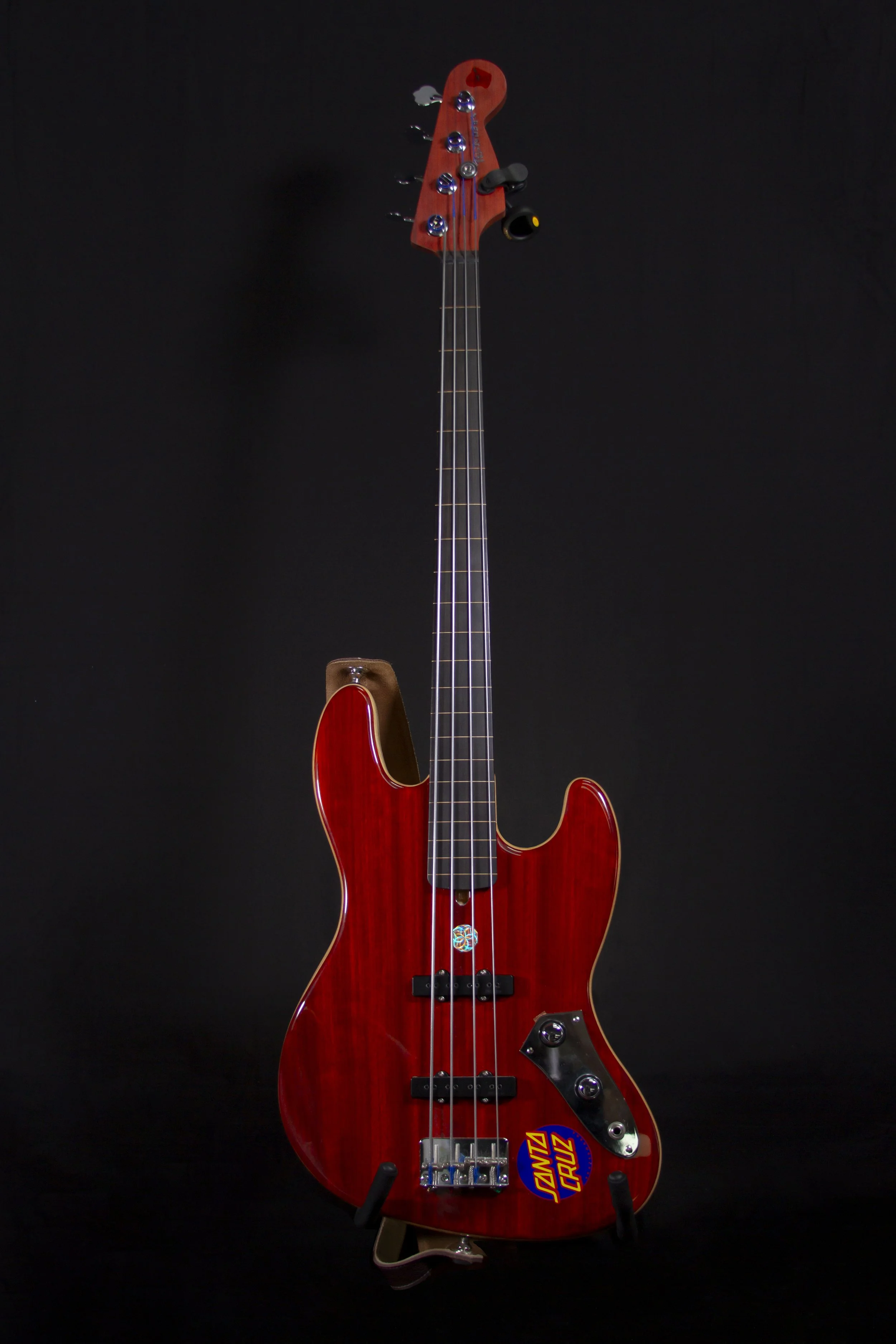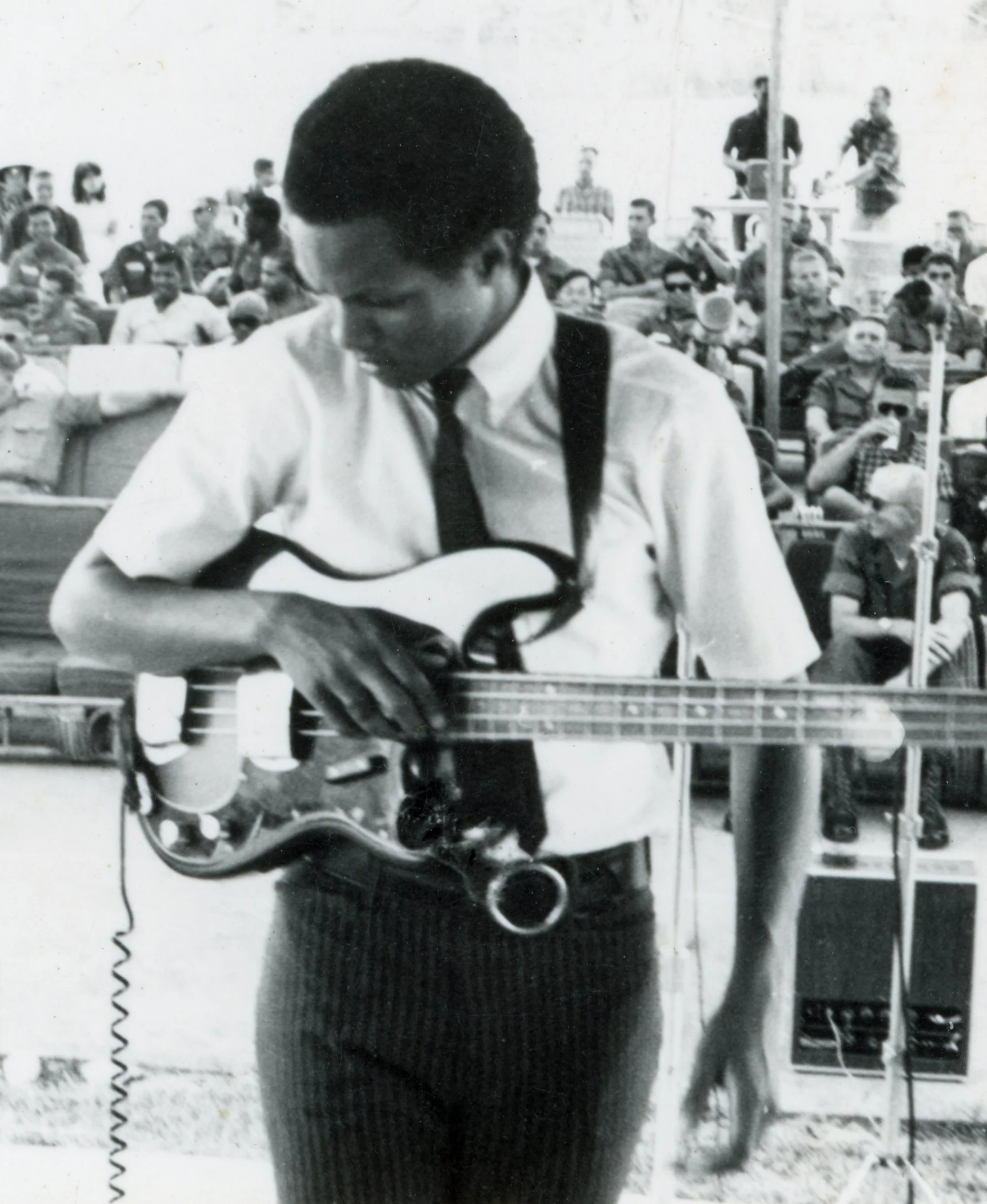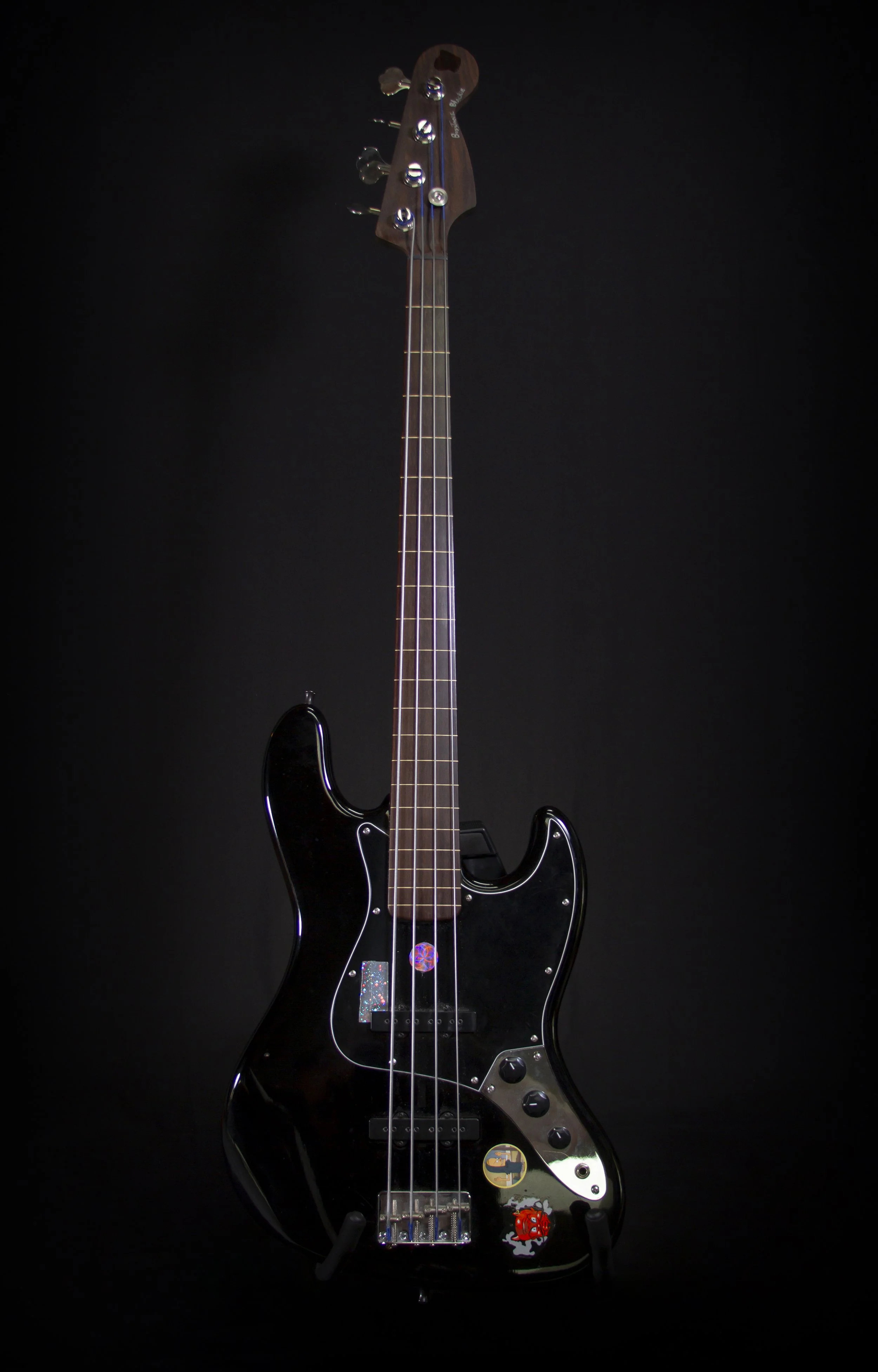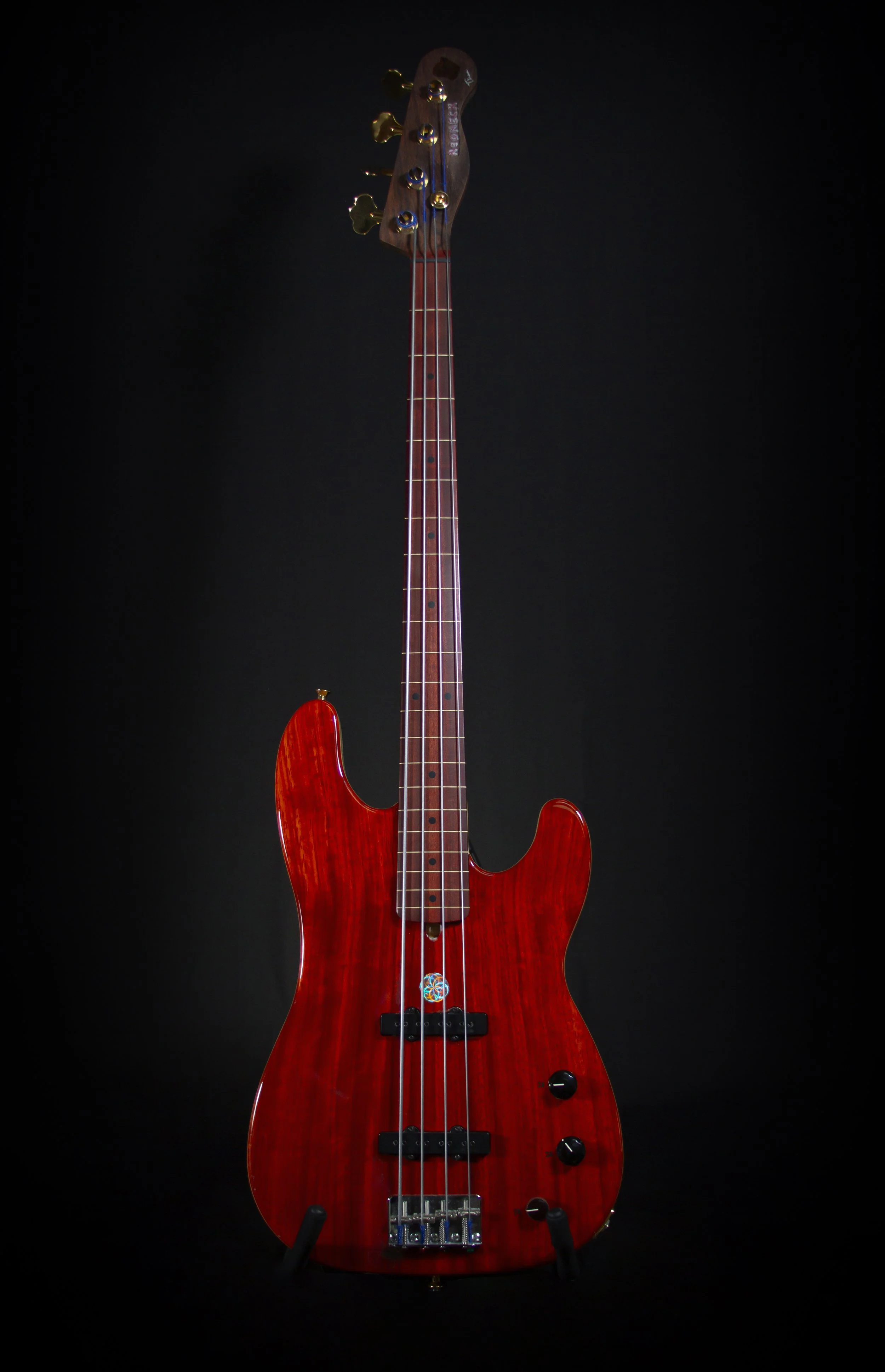Basses of the Past
Teisco Bass
1964 - 1966
My very first bass was a 1960 Teisco Kingston Short Scale Bass. My parents had originally bought me a guitar from Sears and Roebuck, but I wasn’t learning how to play it fast enough. My friend told me I should try bass instead. So I asked my parents if they could trade it in for a bass. The Teisco had one pick up and I had no idea how to tune it. The only way to describe it is, it sucked. It wasn’t well made, so it just didn’t sound good. I didn’t have it for very long.
Gibson EB 3L
1972 - 1974
What I liked about the EB 3L is that it was very low. That big pickup in that neck position produces lows, and that's why I used it on What Were Once Vices Are Now Habits. This is the bass I used to record my song Flying Cloud. I also played the EB 3L at the premiere showing of Don Kirshner's Rock Concert on September 27th, 1973. Later on when Jeff Baxter joined the band I let him mess around with the pickups and it never really sounded the same again. I ended up selling it.
Rickenbacker Bass
1973
I didn't really like the Rickenbacker that much. Which is probably why I smashed it after a fight with my first ex-wife. John Lennon played a Rickenbacker guitar and Chris Squire the bass player for Yes played one for his entire career. Paul McCartney played one for a while too. I think I only played the Rickenbacker for about half a tour. I did play it on The Midnight Special in 1973. We opened with “Jesus is Just Alright with Me”.
Fender Precision Bass aka “Takin’ It To The Streets Bass”
1976 - to the present
I have few basses left from my career with the Doobie Brothers. I played this bass on the road, in the studio and on Taking it to the Streets. When I brought it into the studio the producer said, “Don't ever sell that one.” So I haven't. Fender Precision Basses have a very specific sound. It has a Fender body with Fender pickups and the only thing I changed was the neck because when I first played that bass it had a fretted neck and I hated it. It was too wide. Now it has a Warmoth ebony neck. You can see where I tried to sand some of the finish so I could see what the wood was. I’m still not sure what type of wood it is. I bought that one from Guitar Showcase in San Jose in 1974 or 75. I didn't start using it until 1976, which is after we cut the Taking It to the Streets album. I used it for I think one or two tours before I went back to my “different bass for every tour model.
Built Basses
Long after I left the Doobies, when I was playing with the White Album Ensemble in the early 2000s in Santa Cruz, I started building fretless basses. I had done some work on basses and I had my basses assembled by a guitar shop down in Los Gatos. I watched them enough to know that what they were doing was pretty easy and I thought, "I can do that!” The few instruments I found didn’t meet my standards, so I ordered the parts–body and neck–from Warmoth in Washington state. The pickups, bridge, and tuners are after-market parts. I do the soldering and wiring of the electronic parts myself. It takes a while to get it right, because I am looking for a specific sound. The first one I built took three weeks to get the sound right. Subsequent instruments got easier for me to get the sound I was going for. The sound of each bass is slightly different from the others–I can hear it, but others might not be able to.
The Wolf
This is the first one that I made that has all Warmoth parts. This bass has a smaller body than most of my other basses. It is all mahogany. The back of the neck is walnut and the fingerboard is bloodwood, which is my favorite fingerboard wood. It’s also called satine. Bloodwood is that dark red in color and it’s very dense with a smooth feel.
The Mermaid
The Mermaid was originally a Fender Squier body, and I put a Warmoth neck on it. There were two or three basses that I bought as Fender Squire, mostly for the body, and then took the neck off and changed it to a fretless Warmoth. Squire is a cheap version of Fender's body that were first made in Japan and then they moved to China and Indonesia because of manufacturing costs.
Peanut Butter and Chocolate
This bass has a Warmoth body with a koa top and swamp ash back. This is the first all Warmoth bass that I put together. This photo was taken the last time I ever played at Michaels on Main Street in Soquel, CA before it closed down because of a fire in 2022. It’s a good playing and a good sounding bass.
Tri-Tone 2
The top of the body is bloodwood with an alder back. The finger board is ebony. It has the stacked tone controls, volume in the middle, tone on the outside. That's the tone control unit that they used. I don't know why they changed it, but after the first year of manufacturing they went to the three-piece.
Fender Precision Bass
1966 - 1973
When I graduated high school in 1966 I bought myself a Fender Precision as a graduation present. I played that P Bass with the Sixpenny Opera. When I first joined The Doobie Brothers I traded that Precision Bass in for a Gibson. I was young and stupid! When I realized my mistake, it was already sold. If I had kept that bass it would be worth a lot of money today!
The Alembic
1972 - 1974
The Alembic was the first powered bass I ever played. I couldn't get it to sound like a bass for the life of me! It always sounded like too much high end. It had different types of controls than anything I had ever used before. I didn't really like the sound of it, plus it was too heavy because of the wood and all the electronics. One of my favorite bass players, Jimmy Johnson (who played with Allan Holdsworth) uses an Alembic and he gets a great tone out of it. He actually helped Alembic create the first five string bass back in 1976! I kept it and ended up putting it in my basement for about 20 years. Later I gave it to our guitar roadie, Mark Brown.
Thunderbird Gibson
1975
The Thunderbird was loud, but the tone of the Thunderbird didn't end up matching Michael’s (McDonald) keyboard. When a piano player is playing the bass notes with his left hand, they don't sound super low. You can hear the notes clearly all the way down to the bottom, but with the Gibson Thunderbird I couldn't do that because it would mask what Mike was playing with his left hand. So that's why I switched it out and kept the Precision.
Custom Jazz Bass from Guitar Works, Santa Cruz
1977
This is a custom bass that was put together for me by the guys who owned Guitar Works in Santa Cruz, Rick McKee and John Toushar. It has a body that looks like a Fender, they just made it for me. The neck for that one is still in possession of Rick McKee. That was the last time I saw it. I don't have any idea what happened to the body.
Blondie
Blondie is one piece of korina, it’s very light and has a similar tonal quality like mahogany. It's not that heavy. And the neck is maple. Gibson used to make their Flying V guitars out of korina. They don't even have a korina where they can make a one-piece body out of it anymore. They have a limited supply of korina, so I was really lucky to get a full-body korina. There is one DiMarzio jazz pickup and one precision pickup. Sometimes I wanted a jazz type tone so I put the jazz bass pick up near the bridge. I usually keep it off, but when I want to mellow the tone a bit from the precision pick up, I would turn on the jazz pickup. And it makes the sound of the low notes a little less harsh.
Boss Tone Blackie
The reason I started building basses is because each one of them sounds different. Boss Tone Blackie is closest to my ideal, if not my ideal. This one is my favorite, it has the perfect tone for anything. I was born in the 40s and there used to be this radio show which was a detective drama called Boston Blackie and Boston Blackberry was the name of the detective. I like word plays and remembered this show from when I was a kid, and that’s how Boss Tone Blackie got its name! It’s hard to say how old this bass is, because the body is a Fender Squire body. The neck I got from Warmoth. The neck was a fretted neck before. I don't remember exactly how or when I picked that body up. But I went through three necks before I got to that one. The final neck is a walnut back with an ebony fingerboard.
The Redneck
The Redneck has a satine (or bloodwood) finger board which has a really smooth feel to it. The top of this bass is koa with an ash back. I played it with Keith Greeninger three different times. This bass just feels good to play.












